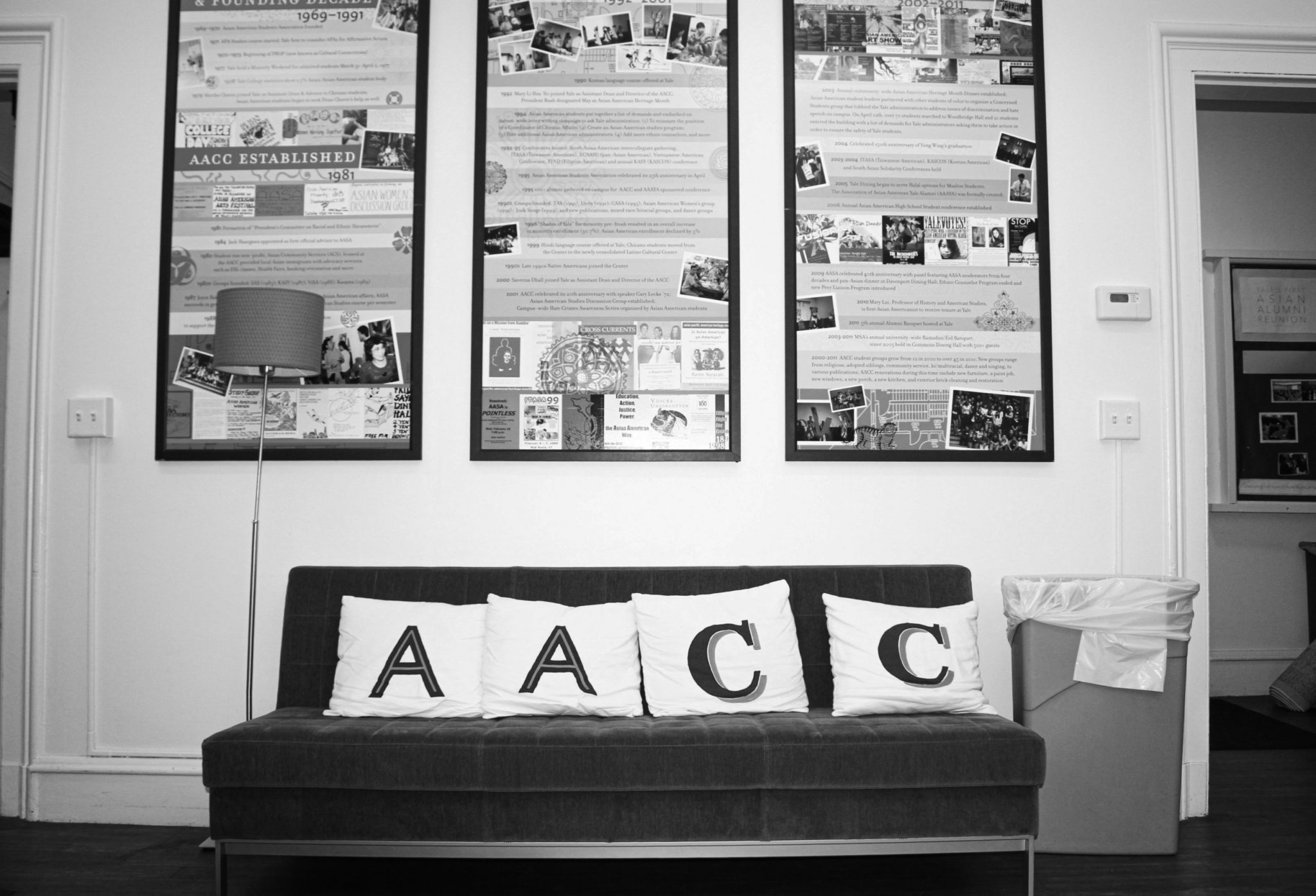“Dreaming and Organizing”: AACC event explores the history of the center
The Asian American Cultural Center hosted an event detailing the creation of the AACC last Friday.

Ruiyan Wang, Contributing Photographer
To kick off Asian American and Pacific Islander Heritage Month celebrations, the Asian American Cultural Center hosted an event on Friday to celebrate the history of the cultural center.
Speakers talked about the journey of opening the AACC, the student advocacy involved with securing a building and the broader AAPI presence at Yale. AAPI Heritage Month is celebrated nationally in May, but the AACC’s celebrations take place in March because the school year ends mid-May. Friday’s event featured three AACC staff members who presented their work related to the center and AAPI heritage.
“[The AACC] was a product of student activism across racial and cultural lines,” Adi Kumar GRD ’25, a graduate assistant for the AACC and one of the presenters at the event, told the News. “We should try as much as we can to understand the history of the spaces we are in.”
Kumar worked to understand the history of the AACC by developing a virtual museum. This website, which was designed for the 40th anniversary of the AACC, features interviews with alumni who were crucial figures in the founding of the cultural center, including Don Nakanishi ’71. He told the News that one of his goals with the virtual museum is to foster a dialogue between generations to strengthen the AAPI community at Yale.
The event also featured Sunehra Subah ’24, who presented on the history of the Asian American Students Alliance and the AACC, and Resty Fufunan ’24, who talked about the history of cultural centers nationwide.
The AACC was born out of an idea by Nakanishi, who wanted Asian students to be able to have a physical space to express their experiences of attending a predominantly white institution.
In 1969, inspired by Yale Chicano students meeting and bonding over meals, Nakanishi started selecting Asian-resembling surnames from the student telephone directory and inviting those students to dinner. At the time, only around 50 of the 4,600 Yale College students were Asian. This informal dinner soon led to the founding of the Asian American Students Alliance.
Three years later — with 250 Asian undergraduates in Yale College — the AASA obtained a one-room office in Durfee Hall.
In 1978, Nick Chen ’79 organized a meeting with then-University President Bart Diamatti to advocate for a bigger space for Asian students at Yale. Subah described this meeting as a pivotal event in AACC history. An “overwhelming” number of students attended this meeting, and — as is traditional in Asian culture — they all took their shoes off at the door. This created a “sea of shoes” outside the office, reflecting the high student interest in obtaining more space.
Kumar emphasized the large role that students had in advocating for and creating the AACC.
“Every renovation, every improvement, every small thing is lobbied for and fought for by … students, over time,” he told the News. “What started off as a small basement room in Durfee is now a campus institution, thanks to decades of student activism.”
In 1979, the AASA and Movimiento Estudiantil Chicano de Aztlán obtained a shared building at 295 Crown St. In 1981, the building officially opened, then known as the Chicano and Asian Cultural Center.
“For me, the AACC embodies safety, community, imagination, and empowerment.” Jenny Lee ’25, Community Programming Chair of the AASA, wrote to the News. “Walking through its rooms and staircases reminds me of the collective work of the Asian-American student generations that came before us and inspires me to honor and sustain their legacy.”
The AACC is continually expanding its space and presence. This past November, the center unveiled a mural covering an entire side of the building. The mural, designed by artist Lauren YoungSmith, was partly conceptualized through listening to the oral interviews at the virtual museum to better understand the past, present and future of the center.
Jason Jiang ’25 elaborated on the importance of the space.
“I feel like my friendships have been made so much more meaningful because of our shared times at AACC events,” Jiang wrote. “It’s just a flood of memories for me — painting tote bags at game night, deep talks at stargazing, procrastinating from work [with] Squid Game.”
The AACC is open Sunday through Thursday from 4 to 9 p.m.







